“We continue to count on the valuable contributions of the Arms Control Association.”
The Evolving Russian Concept of Strategic Deterrence: Risks and Responses
July/August 2017
By Anya Loukianova Fink
Over the last decade, Russia has been putting into operation its vision of strategic deterrence, a doctrinal approach built on a demonstrated spectrum of capabilities and a resolve to use military force. Russia’s strategic deterrence is conceptually different from its Western namesake in that it is not limited to nuclear weapons.
This article introduces Russia’s strategic deterrence, highlights its escalatory potential, and discusses challenges in mitigating its dangers.
Russian military analysts describe strategic deterrence as primarily a defensive strategy that seeks to prevent conflict and to control escalation if a conflict breaks out.1 If tested in a military conflict with the West, however, some of its elements could well fuel escalation dynamics. Most notably, Russia’s plans to control escalation by using conventional precision-strike missile systems on an opponent’s military and economic targets raise the risk of unintended escalation, especially when employed alongside cyber- and electronic warfare capabilities.
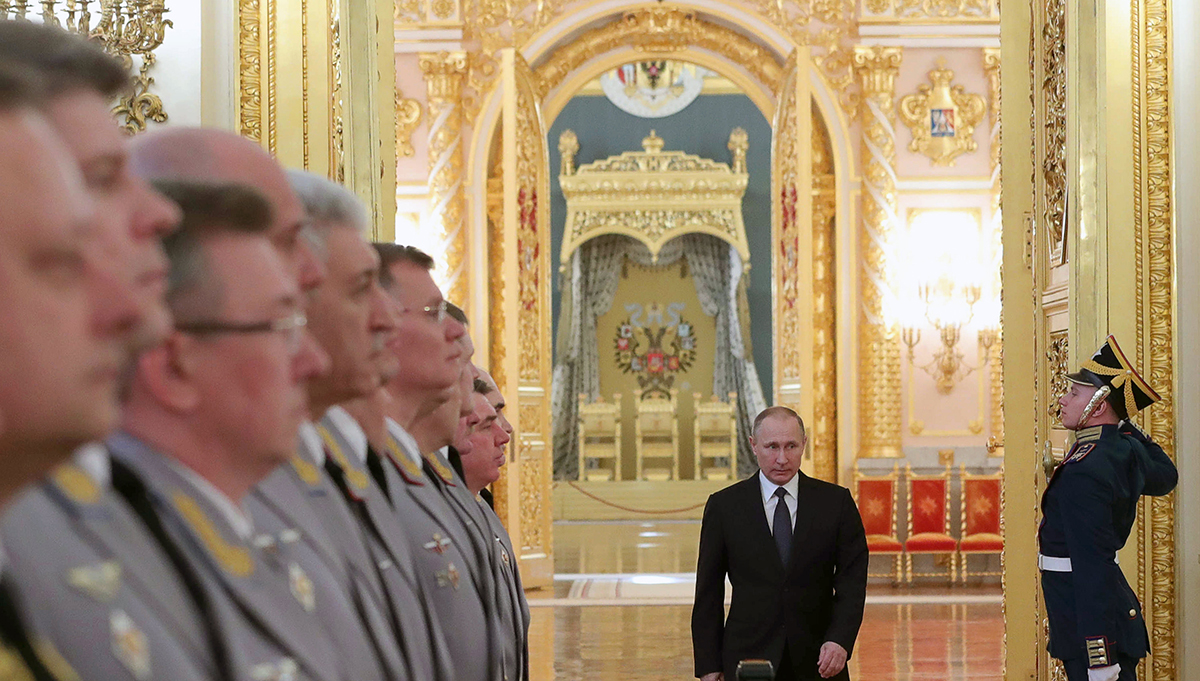 If a conflict involving Russian and U.S./NATO forces erupts, policymakers on both sides will find themselves unprepared to deal with numerous escalation-management challenges, which include understanding the nature of Russia’s deliberate escalation and mitigating the dangers of unintended escalation on both sides. The most urgent step to curbing the escalation potential of such a conflict is a shared commitment to avoid the unintended use of nuclear weapons. This foundation can help facilitate the management of escalation risks that will persist in the relationship between Russia and the West for the foreseeable future.
If a conflict involving Russian and U.S./NATO forces erupts, policymakers on both sides will find themselves unprepared to deal with numerous escalation-management challenges, which include understanding the nature of Russia’s deliberate escalation and mitigating the dangers of unintended escalation on both sides. The most urgent step to curbing the escalation potential of such a conflict is a shared commitment to avoid the unintended use of nuclear weapons. This foundation can help facilitate the management of escalation risks that will persist in the relationship between Russia and the West for the foreseeable future.
Russia’s Approach
Russia’s strategic deterrence approach is grounded in its understanding of internal and external threats and its sense of asymmetry toward the West. 2 Russian military doctrine describes perceived dangers from the United States and NATO readiness to use military force, instability and terrorism that could challenge Russia’s sovereignty, and a local conflict on its vast borders that could escalate, including to the use of nuclear weapons. 3 Russian officials also have concerns about their inability to counter Western military technological developments and the dangers posed by the proliferation of weapons of mass destruction technologies to state and nonstate actors.
As part of strategic deterrence, Russia developed a spectrum of nonmilitary and non-nuclear and nuclear capabilities intended for continuous employment in peacetime and wartime. 4 On one end of this spectrum are nonmilitary means that Russian leaders see as tools to achieve Russia’s national interests without the direct use of military force. Russia’s political and “information war” activities have received a lot of attention in the West as a Russian innovation. Yet, Russian military officials and analysts have argued that Russia learned this approach from observing Western activities, notably in eastern Europe and the Middle East, since the end of the Cold War. 5 Furthermore, although nonmilitary means are important to Russia’s so-called theory of victory, strategic deterrence is fundamentally a strategy based on convincing an opponent of a credible threat of using military force.
At the other end of this spectrum, strategic nuclear forces remain at the heart of Russia’s strategic stability calculus, intended to prevent a regional or large-scale conflict by deterring the West. 6 Moscow is in the midst of a multiyear modernization of all three legs of its nuclear triad, although Russian experts suggest that some of the systems’ procurement is industry driven and excessive. 7 The doctrine and posture of Russia’s nonstrategic nuclear forces remains opaque, but it has long been linked to the perceived weakness of Russia’s general purpose forces and other conventional capabilities. 8 Some have noted that Russian nonstrategic nuclear forces may also intend to “offset the growing disparities” in regional ballistic missile defense. 9
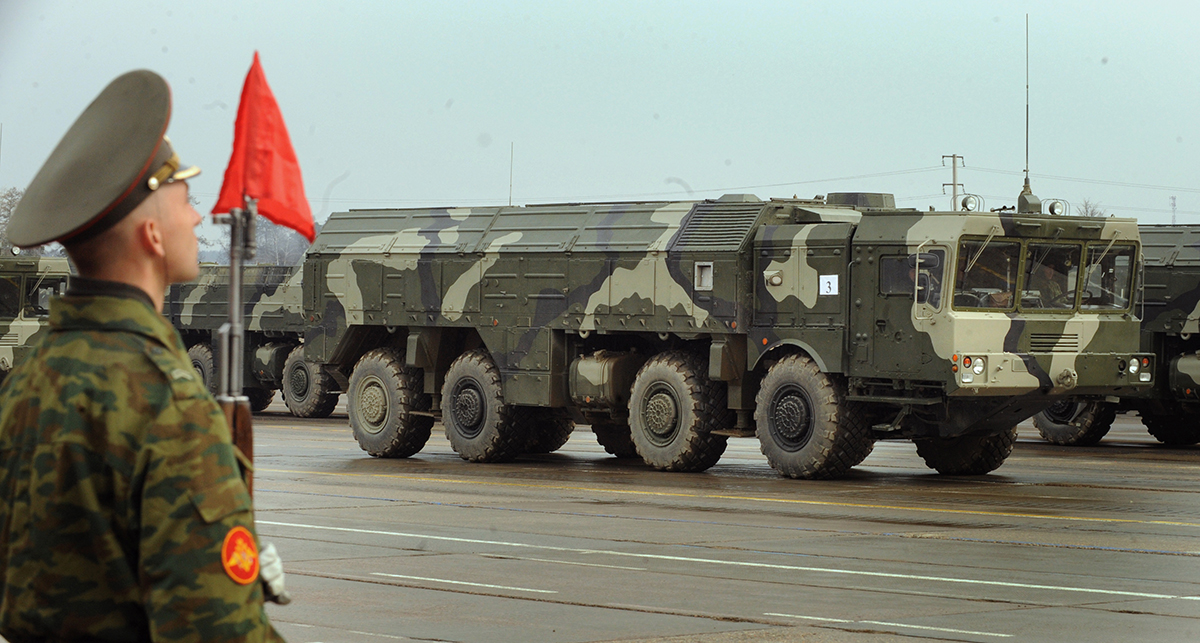 In between, Moscow has heavily invested in development of conventional capabilities. Russia has extensively exercised its general purpose forces over the last five years, testing their command-and-control systems and improving their equipment, readiness, and mobility for a range of possible conflict scenarios. 10 Russia’s current force posture points primarily to a preoccupation with local contingencies on its borders with non-NATO neighbors. 11 Its concerns also extend to the potential vulnerability of Kaliningrad and Crimea. 12
In between, Moscow has heavily invested in development of conventional capabilities. Russia has extensively exercised its general purpose forces over the last five years, testing their command-and-control systems and improving their equipment, readiness, and mobility for a range of possible conflict scenarios. 10 Russia’s current force posture points primarily to a preoccupation with local contingencies on its borders with non-NATO neighbors. 11 Its concerns also extend to the potential vulnerability of Kaliningrad and Crimea. 12
As part of an effort to reduce its reliance on nuclear weapons at early stages of conflict, Russia has developed a range of non-nuclear deterrence capabilities, including conventional precision-strike systems (long-range cruise missiles and short-range ballistic missiles), air and missile defenses, and various capabilities intended to disrupt an adversary’s command, control, communications, computers, intelligence, surveillance, and reconnaissance, what the military calls C4ISR. 13 It has sought to demonstrate these capabilities in Ukraine and Syria.
Tailored Escalation
Russia’s direct and indirect uses of force have fueled debate about the role of deliberate escalation in its strategic deterrence approach. Such escalation could be used to gain military advantage or to get an opponent to halt its actions—an important distinction in escalation management. 14 This distinction is not something that Russian analysts address.
Strategic deterrence is built on Russia’s view of conflicts as defensive, preventive, and just. 15 Russian military writings describe it as an approach with elements of deterrence, containment, and compellence that aims to “induce fear” in opponents. 16 To achieve this and other effects, Russian military theorists focus on the importance of tailoring nonmilitary means and the direct and indirect uses of military force. 17
Such tailoring has proven difficult in practice for Russia. During the Ukraine crisis, Russian leadership highlighted Russia’s nuclear status to signal that Russia’s stakes were higher than those of the West. In addition, Russian diplomats and former officials threatened nuclear use against NATO members and partners. 18 Russian aircraft “buzzed” vessels, risking accidents, and engaged in other hazardous activities. 19 Denials by officials of Russia’s support for separatists in Ukraine, as well as the July 2014 downing of Malaysia Airlines Flight 17, also raised questions about Russia’s interest or ability to credibly signal limits or engage in restraint.
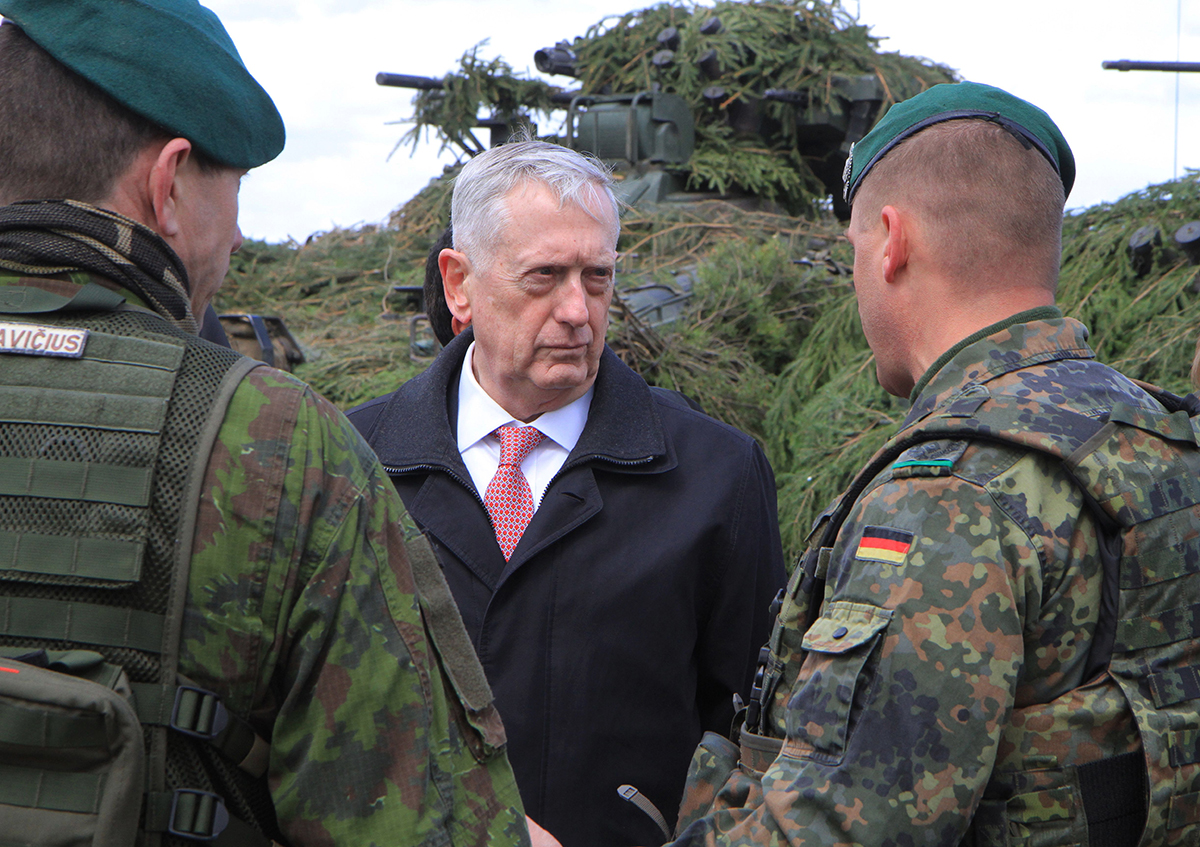 In the early phases of a conflict, Russian military writings suggest that Russia would first work to reduce escalation through nonmilitary means. 20 Yet, diplomacy and information activities could be viewed by the West as part and parcel of Russia’s “gray zone” strategies. On the Russian side, Western actions may be dismissed as “information war.” 21 To be sure, Russia’s restraint and bilateral diplomacy proved effective after Turkey downed its fighter-bomber in June 2015. Nevertheless, the absence of effective and credible crisis management mechanisms, including in the NATO-Russia Council, amplifies the danger that both sides will view nonmilitary means as propaganda that paves the way for military force.
In the early phases of a conflict, Russian military writings suggest that Russia would first work to reduce escalation through nonmilitary means. 20 Yet, diplomacy and information activities could be viewed by the West as part and parcel of Russia’s “gray zone” strategies. On the Russian side, Western actions may be dismissed as “information war.” 21 To be sure, Russia’s restraint and bilateral diplomacy proved effective after Turkey downed its fighter-bomber in June 2015. Nevertheless, the absence of effective and credible crisis management mechanisms, including in the NATO-Russia Council, amplifies the danger that both sides will view nonmilitary means as propaganda that paves the way for military force.
Beginnings of a Conflict
Russian political-military analysts have discussed the dangers of unintended escalation given the proximity of NATO and Russian military forces. 22 As conventional postures and plans are adapted to meet perceived threats, the potential for a conflict outbreak due to inadvertent or accidental escalation increases. In turn, Russia’s practical ability to manage such escalation through strategic deterrence is limited.
In a nascent crisis, Russia is likely to engage in deterrence signaling and increase the readiness of selected conventional and perhaps nuclear capabilities. Russian military writings stress the importance of tight political control over and rules of engagement for military forces, especially as they signal intent to deny domains in a conflict and engage in reconnaissance. 23 Russian analysts also focus, however, on denying the opponent escalation dominance and achieving decisive effects in the initial period of war. 24 They further discuss mobilization activities, including of the public. 25 The challenge is that deterrence signaling activities may raise the risk of inadvertent escalation during a critical time, while mobilization activities could contribute to a perception that a conflict is unavoidable.
As the West’s military-political deterrence posture shifts in response to Russia’s deterrence signaling and mobilization, Russia may engage in a crisis response and rush forces to the theater. Military writings point to the likelihood of active use of cyber- and electronic warfare to disrupt Western C4ISR systems. 26 These actions are likely to be reciprocated, resulting in a significant degree of damage and other consequences to both sides that are not yet fully understood. These may further stress policymakers’ abilities to understand escalation dynamics and control the employment of military forces in the theater.
In addition, nuclear forces may be alerted, and warheads will begin to be moved from central storage facilities to bases. Instead of successfully halting the conflict, some Russian writings suggest that these actions may heighten concerns about the vulnerability of nonstrategic nuclear weapons. 27 Managing escalation of the conflict will depend on the mutual ability to maintain control of the use of force and understand critical thresholds.
Conventional Precision-Strike Weapons
As Russia embarked on a modernization of its conventional forces in the early 2000s, Russian military theorists advocated the creation of non-nuclear deterrence capabilities for the strategic deterrence spectrum. 28 Some noted that such capabilities along with a doctrinal foundation could be important due to the “widely accepted consequences of nuclear weapons use and, as a result, the low credibility of nuclear weapons as a deterrence measure at early stages of conflicts among states.” 29 Russia’s 2014 military doctrine introduced a new “forceful” strategic deterrence step that envisaged the use of precision strike weapons to coerce an opponent to halt its military actions. 30
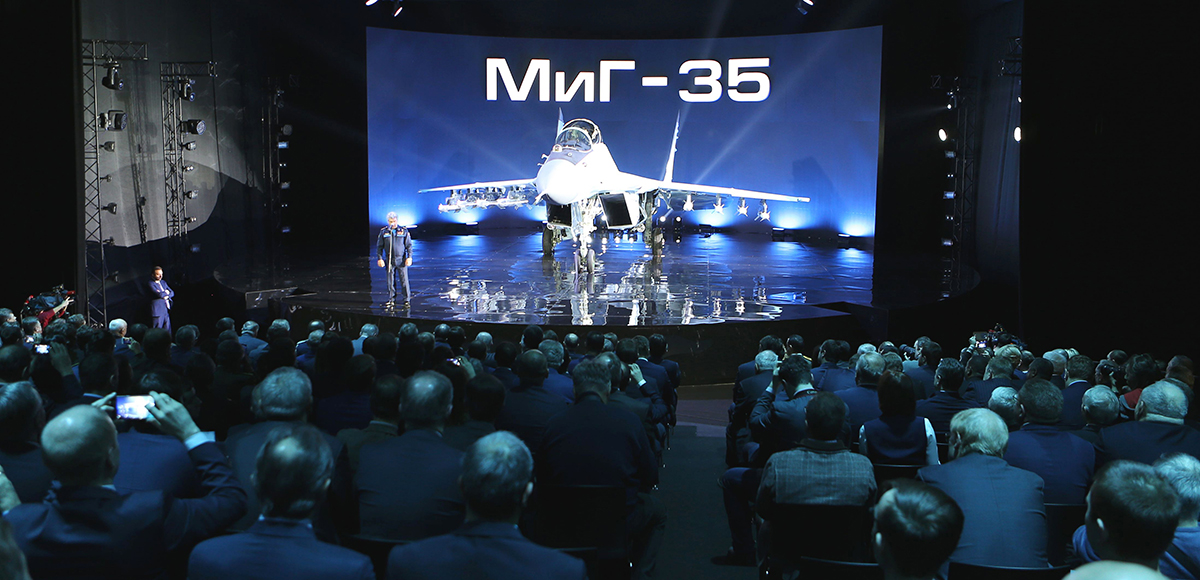
Russia does not have sufficient conventional precision-strike capabilities to credibly threaten the full range of Western counterforce targets. Russian military analysts thus focus on limited strikes to inflict “deterrent damage” on “vitally” important military targets. 31 Targets include “weak spots” of military infrastructure such as C4ISR and transportation nodes. 32 As escalation progresses, they also discuss striking economic targets with, in theory, an aim to limit civilian losses. Such strikes would seek to damage electricity generation and distribution systems, dams, chemical production facilities, and other targets. 33 Russian military doctrine reflects a concern about Western strikes on similar targets. 34
Uncertainties exist as to whether this step will be able to effectively control escalation. As some Russian commentators note, Russian doctrine does not spell out the thresholds or criteria for these strikes or how Russia will attempt to communicate what this step means. 35 Presumably, cyberattacks will also be used to disable operations of some of the intended targets, which could contribute to confusion about the aims of conventional-weapon precision strikes. More practically, strikes on counterforce targets to inflict “deterrent damage” could result in only temporary disruptions. Strikes on economic assets may solidify an opponent’s resolve. Their consequences become even less predictable in an information-war environment.
As some Western analysts point out, Russia’s precision strike systems are dual capable, 36 but Russian writings do not focus on the potential of an opponent’s misperception of a Russian conventional signaling strike as a nuclear one. Presumably, Russia’s inclusion of a step with conventional precision-strike weapons could have been intended as a signal of a higher nuclear threshold. As Russia’s conventional precision-strike capabilities progress, watching doctrinal and employment evolution will be essential for understanding Russia’s critical thresholds. In the meantime, this issue could benefit from bilateral military-to-military contacts and efforts to privately clarify this new doctrinal element with Western counterparts.
Ambiguous Nuclear Thresholds
Russian military writings in the wake of the 1999 NATO bombing of Kosovo suggested that Russia could have engaged in a single, maybe low-yield nuclear detonation as part of a warning or to press the adversary to back down. This was Russia’s way of coping with a perceived conventional vulnerability at the time, especially regarding Western precision-strike capabilities. The standard line of thinking in Russian writings was that such nuclear reliance would be obviated once credible conventional precision-strike capabilities emerged. 37
Beyond a statement in Russian military doctrine about nuclear use when the “existence of state” is at stake, Russia’s actual threshold for nuclear use remains ambiguous. Russian military theorists view some of this ambiguity as beneficial, even though they extensively discuss what constitutes “unacceptable damage” to would-be opponents. 38 They also outline roles for nuclear weapons at later stages of large-scale conflict in strategic operations. 39 Some note, however, that “deterrence through use (or threat) of nuclear weapons even as limited strikes does not fully guarantee that the conflict would not take the path of escalation with the unlimited (mass) use of nuclear weapons.” 40
Russian political and military officials have expressed persistent concerns about an “aerospace attack” that could inflict damage on Russia’s strategic nuclear forces with conventional precision-strike weapons. 41 This and several related threat scenarios build on Russia’s suspicions about U.S. missile defenses, especially the capabilities of Aegis Ashore launchers that are part of the European Phased Adaptive Approach and prompt global-strike systems. 42 Russian military theorists also have concerns about inadvertent nuclear escalation that arises from the synergy of precision strike, cyber, and electronic means in combat. 43 As the development of these capabilities continues to progress and U.S. nuclear modernization begins, it will be important to take advantage of the possibility that Russia will wish to avoid nuclear escalation and look for ways to reduce nuclear risks in a potential conflict.
Reducing Escalation Dangers
If a conflict involving Russia and the West breaks out tomorrow, policymakers on both sides would find themselves unprepared to deal with numerous escalation dangers. In a conflict, managing escalation will be important for the West, but it will also be critical for Russia. Western policy efforts must find ways
to encourage Russia’s exercise of restraint regarding its deliberate escalation and contribute to mitigating the dangers of unintended escalation on its part.
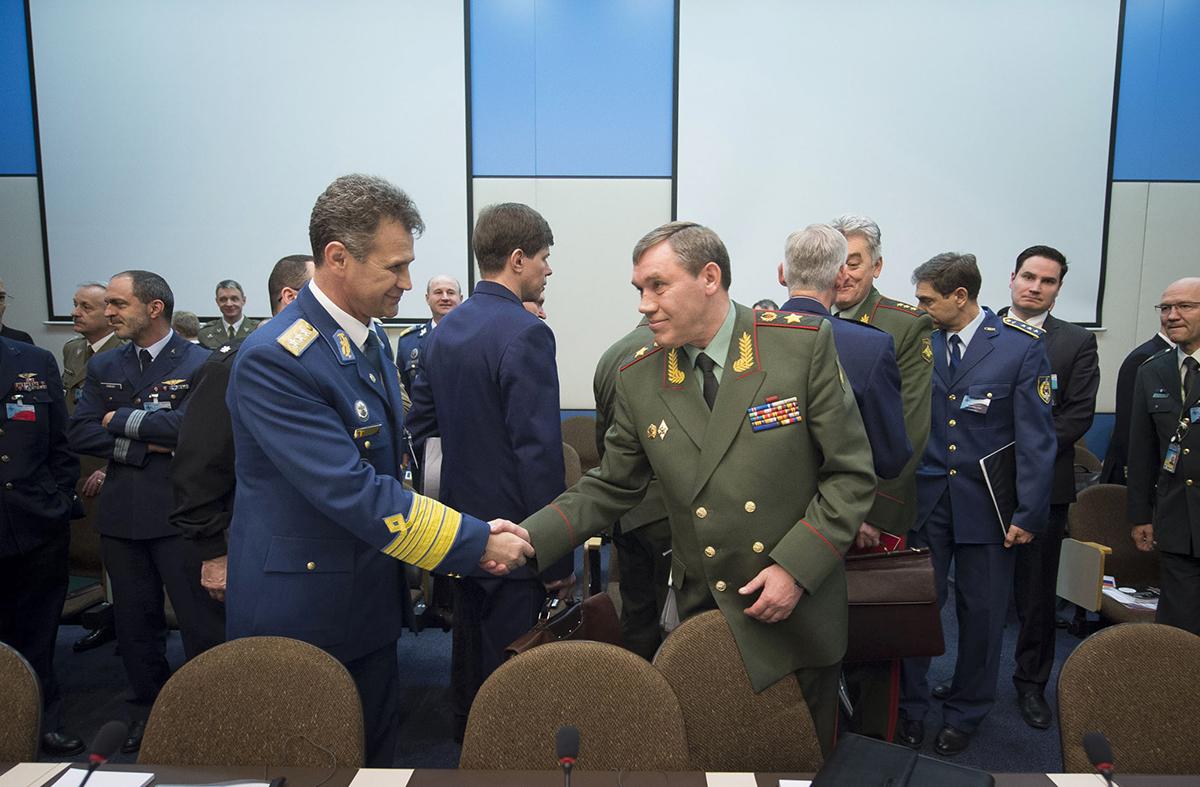 Ongoing U.S. and NATO efforts to adapt conventional deterrence postures and policies, as well as to improve resilience and strategic communication, are important ways to influence Russia’s deliberate escalation calculus. 44 Furthermore, with regard to Russia’s “forceful” non-nuclear deterrence step, NATO needs to consider cruise missile defense approaches and “point defenses of critical airfields and command-and-control facilities.” 45 Such steps need to be taken in tandem with clarifying thresholds and resolving mutual concerns around the Intermediate-Range Nuclear Forces Treaty and the European Phased Adaptive Approach approach. 46
Ongoing U.S. and NATO efforts to adapt conventional deterrence postures and policies, as well as to improve resilience and strategic communication, are important ways to influence Russia’s deliberate escalation calculus. 44 Furthermore, with regard to Russia’s “forceful” non-nuclear deterrence step, NATO needs to consider cruise missile defense approaches and “point defenses of critical airfields and command-and-control facilities.” 45 Such steps need to be taken in tandem with clarifying thresholds and resolving mutual concerns around the Intermediate-Range Nuclear Forces Treaty and the European Phased Adaptive Approach approach. 46
In a nuclear crisis, effective U.S./NATO-Russian communication in an environment of cyber-, electronic, and information warfare will be key to credibly signaling limits, including the absence of a threat to the “existence of state” or nuclear forces. From this perspective, the de facto absence of a credible crisis management and communication mechanism poses a significant challenge to successful escalation management. Given the failure of the NATO-Russia Council in past crises, policy efforts need to identify or create such a mechanism.
Russia’s strategic deterrence exploits the attention and fear generated by indirect uses of military force, but Russian analysts have also argued that Moscow must seriously engage Western proposals on transparency of conventional forces. 47 There may be opportunities for the West to pursue efforts to gain further limits and notification requirements on military exercises under the 2011 Vienna Document on Confidence- and Security-Building Measures; enhanced military information exchanges, including on naval activities; and subregional risk reduction measures. 48
Managing the risks of accidental escalation that could result from force management errors is also essential. Western policy has allowed Russia to normalize coercive strategic deterrence activities, such as “buzzing” by military aircraft, that raise the risk of accidents involving military forces. Some in the West have advocated a plan of action on avoiding hazardous incidents in the Euro-Atlantic area. This plan provides an omnibus NATO-Russian approach to dated and piecemeal bilateral arrangements among numerous states-parties, including the 1972 Agreement on the Prevention of Incidents On and Over the High Seas and the 1989 Agreement on the Prevention of Dangerous Military Activities. 49 Such a step may help to induce Russian restraint and accountability.
Finally, Western studies have suggested that when faced with a prospect of a nuclear conflict, both sides need to recognize that they share an interest in preventing nuclear use. 50 In line with this, some Russian analysts have called for a high-level statement that would reaffirm U.S. President Ronald Reagan’s declaration that “a nuclear war cannot be won and must never be fought.” 51 To be sure, Russian President Vladimir Putin recently sought to reassure a Western audience that Russia has no intentions of using its nuclear weapons for coercion because that could have escalatory consequences with global implications. 52 Pursuing such a joint U.S.-Russian statement could thus be a useful way ahead. 53
Endnotes
1. Yu. A. Pechatnov, “Teoriya sderzhivaniya: genesis” [Deterrence theory: Beginnings], Vooruzheniye I Ekonomika, February 2016.
3. Embassy of the Russian Federation to the United Kingdom of Great Britain and Northern Ireland, “The Military Doctrine of the Russian Federation,” June 29, 2015, http://rusemb.org.uk/press/2029 (hereinafter Military Doctrine of the Russian Federation).
4. Kristin Ven Bruusgaard, “Russian Strategic Deterrence,” Survival, Vol. 58, No. 4 (August-September 2016): 7-26.
5. Timothy Thomas, “Thinking Like a Russian Officer: Basic Factors and Contemporary Thinking on the Nature of War,” Foreign Military Studies Office, April 2016, http://fmso.leavenworth.army.mil/documents/Thinking%20Like%20A%20Russian%20Officer_monograph_Thomas%20(final).pdf.
6. Andrei Kokoshin, “Ensuring Strategic Stability in the Past and Present: Theoretical and Applied Questions,” Belfer Center for Science and International Affairs, June 2011, http://www.belfercenter.org/sites/default/files/legacy/files/Ensuring%20Strategic%20Stability%20by%20A.%20Kokoshin.pdf.
7. “Alexey Arbatov: Yesli tam budet krupnaya voina, to nam budet uzhe ne do tsen na chernoye zoloto” [If there is a large-scale war, we won’t care about black gold prices], Economy Times, February 16, 2016, http://economytimes.ru/kurs-rulya/aleksey-arbatov-esli-tam-budet-krupnaya-voyna-nam-budet-uzhe-ne-do-cen-na-chernoe-zoloto.
8. Olga Oliker, “Russia’s Nuclear Doctrine: What We Know, What We Don’t, and What That Means,” Center for Strategic and International Studies (CSIS), May 2016, https://csis-prod.s3.amazonaws.com/s3fs-public/publication/160504_Oliker_RussiasNuclearDoctrine_Web.pdf.
9. Vladimir Kozin, “Russian Approach to Non-Strategic Nuclear Weapons and Confidence Building Prospects,” n.d. (remarks at workshop in Warsaw held February 7-8, 2013).
10. Gudrun Persson, ed., “Russian Military Capability in a Ten-Year Perspective - 2016,” FOI-R--4326--SE, December 2016, https://www.foi.se/report-search/pdf?fileName=D%3A%5CReportSearch%5CFiles%5C5fa9f89b-8136-4b15-9aaf-1d227aee90a0.pdf.
11. Alexander Golts and Michael Kofman, “Russia’s Military: Assessment, Strategy, and Threat,” Center for Global Interests, June 2016, http://globalinterests.org/wp-content/uploads/2016/06/Russias-Military-Center-on-Global-Interests-2016.pdf.
12. Anton Lavrov, “Russia’s Geopolitical Fears,” Moscow Defense Brief, No. 5 (May 2016).
13. V.M. Burenok and O.B Achasov, “Neyadernoye sderzhivaniye” [Non-nuclear deterrence], Voyennaya Mysl, December 2007.
14. Forrest Morgan et al., “Confronting Emergent Nuclear-Armed Regional Adversaries,” RAND Corp., 2015, http://www.rand.org/content/dam/rand/pubs/research_reports/RR900/RR974/RAND_RR974.pdf.
15. For a discussion of Russia’s defensive logic, see Andrei Kolesnikov, “Do The Russians Want War?” Carnegie Moscow Center, June 2016, http://carnegieendowment.org/files/Article_Kolesnikov_2016_Eng-2.pdf.
16. Pechatnov, “Teoriya sderzhivaniya: genesis.”
17. A.A. Kokoshin, Yu. N. Balueyvskiy, V. Ya. Potapov, “Vliyaniye noveishikh tendentsii v razvitii tekhnologii i sredstv vooruzhennoi bor’by na voyennoye iskusstvo” [Impact of new tendencies in development of technologies and means of arms combat on military art], Vestnik Moskovskogo Universiteta, Vol. 25, No. 4 (2015).
18. Persson, “Russian Military Capability in a Ten-Year Perspective - 2016.”
19. Łukasz Kulesa, Thomas Frear, and Denitsa Raynova, “Managing Hazardous Incidents in the Euro-Atlantic Area: A New Plan of Action,” European Leadership Network Policy Brief, November 2016, http://www.europeanleadershipnetwork.org/medialibrary/2016/11/02/ab4a4c1d/ELN%20Managing%20Hazardous%20Incidents%20November%202016.pdf.
20. Thomas, “Thinking Like a Russian Officer.”
21. S.G. Chekinov and S.A. Bogdanov, “Evoliutsiya sushnosti I soderzhaniya ponyatiya ‘voina’ v XXI stoletii” [Evolution of the nature and meaning of the concept “war” in the 21st century], Voyennaya Mysl, January 2017.
22. See “Velichaishaya ostorozhnost i blagorazumiye” [Greatest care and consideration], August 24, 2015, http://www.globalaffairs.ru/number/Velichaishaya-ostorozhnost-i-blagorazumie-17638.
23. Kokoshin, Balueyvskiy, and Potapov, “Vliyaniye noveishikh tendentsii v razvitii tekhnologii i sredstv vooruzhennoi bor’by na voyennoye iskusstvo.”
24. Ibid.; Thomas, “Thinking Like a Russian Officer.”
25. See S.V. Goncharov and N.F. Artamonov, “Moralno-psikhologicheskoye obespecheniye mobilizatsionnoi raboty” [Moral-psychological support of mobilization work] Voyennaya Mysl, April 2014.
26. Kokoshin, Balueyvskiy, and Potapov, “Vliyaniye noveishikh tendentsii v razvitii tekhnologii i sredstv vooruzhennoi bor’by na voyennoye iskusstvo”; Thomas, “Thinking Like a Russian Officer.”
27. Kokoshin, “Ensuring Strategic Stability in the Past and Present.”
28. A.A. Kokoshin, “Strategic Nuclear and Nonnuclear Deterrence: Modern Priorities,” Science and Society, Vol. 84, No. 3 (2014): 195-205.
29. Yu. A. Pechatnov, “Metodicheskii podhod k opredelniuy sderzhivayushchego ushcherba s uchetom subyektivnykh osobennostei ego vospriyatiya veroyatnym protivnikom” [Methodological approach to determining deterrent damage considering subjective specialties of its perception by likely adversary], Vooruzheniye I Ekonomika, Vol. 3, No. 15 (2011).
30. Military Doctrine of the Russian Federation, no. 26.
31. Burenok and Achasov, “Neyadernoye sderzhivaniye.”
32. Kokoshin, “Strategic Nuclear and Nonnuclear Deterrence.”
33. Ibid.; Burenok and Achasov, “Neyadernoye sderzhivaniye.”
34. Military Doctrine of the Russian Federation, no. 14b.
35. Konstantin Sivkov, “Pravo na udar” [Right to strike], Voyenno-Promyshlennyi Kuryer, March 5, 2015, http://vpk-news.ru/articles/19370.
36. Pavel Podvig and Javier Serrat, “Lock Them Up: Zero-Deployed Non-Strategic Nuclear Weapons in Europe,” UN Institute for Disarmament Research, 2017, http://www.unidir.org/files/publications/pdfs/lock-them-up-zero-deployed-non-strategic-nuclear-weapons-in-europe-en-675.pdf.
37. Andrei Zagorski, “Russia’s Tactical Nuclear Weapons: Posture, Politics, and Arms Control,” Institute for Peace Research and Security Policy, 2011, http://www.unidir.org/files/medias/pdfs/executive-summary-a-zagorski-eng-0-325.pdf.
38. Dave Johnson, “Nuclear Weapons in Russia’s Approach to Conflict,” Fondation Pour la Recherche Stratégique, No. 06/2016 (November 2016), https://www.frstrategie.org/publications/recherches-documents/web/documents/2016/201606.pdf.
40. Pechatnov, “Teoriya sderzhivaniya: genesis.”
41. Alexey Arbatov, “Understanding the U.S.-Russia Nuclear Schism,” Survival, Vol. 59, No. 2 (April-May 2017).
42. Vladimir Dvorkin, “Yadernyi psikhoz krepchayet” [Nuclear psychosis is getting stronger], Nezavisimoye Voyennoye Obozreniye, May 19, 2016; Greg Thielmann and Andrei Zagorski, “INF Treaty Compliance: A Challenge and an Opportunity,” Deep Cuts Working Paper, No. 9 (February 2017), http://www.deepcuts.org/images/PDF/DeepCuts_WP9_ThielmannZagorski.pdf.
43. Kokoshin, Balueyvskiy, and Potapov, “Vliyaniye noveishikh tendentsii v razvitii tekhnologii i sredstv vooruzhennoi bor’by na voyennoye iskusstvo.”
44. Lisa Sawyer Samp et al., “Recalibrating U.S. Strategy Toward Russia,” CSIS, March 2017, https://csis-prod.s3.amazonaws.com/s3fs-public/publication/170329_Hicks_USStrategyTowardRussia_Web.pdf.
45. Dennis M. Gormley, “The Offense-Defense Problem,” Deep Cuts Working Paper, No. 6 (May 2016), http://deepcuts.org/images/PDF/DeepCuts_WP6_Gormley_UK.pdf.
46. Thielmann and Zagorski, “INF Treaty Compliance.”
47. Sergei Oznobishchev, “Russia and NATO: From the Ukrainian Crisis to the Renewed Interaction,” in Russia: Arms Control, Disarmament, and International Security, ed. Alexei Arbatov and Sergei Oznobishchev (Moscow: IMEMO, 2016), https://www.sipri.org/sites/default/files/SIPRI-Yearbook-Supplement-2015.pdf.
48. For a good discussion of some of these approaches, see Kimberly Marten, “Reducing Tensions Between NATO and Russia,” Council Special Report No. 79, Council on Foreign Relations, March 2017, https://www.cfr.org/sites/default/files/pdf/2017/03/CSR_79_Marten_RussiaNATO.pdf.
49. Kulesa, Frear, and Raynova, “Managing Hazardous Incidents in the Euro-Atlantic Area.”
50. Morgan et al., “Confronting Emergent Nuclear-Armed Regional Adversaries.”
51. Arbatov, “Understanding the U.S.-Russia Nuclear Schism.”
52. President of Russia, “Meeting of the Valdai International Discussion Club,” video, October 27, 2016, http://en.kremlin.ru/events/president/news/53151.
53. The author would like to thank Lynn Davis and several other reviewers for their feedback on earlier versions of this piece.
Anya Loukianova Fink is a Stanton Nuclear Security Fellow at the RAND Corporation. The views expressed in this article are those of the author and do not necessarily reflect the positions or policies of the Stanton Foundation or the RAND Corporation.
